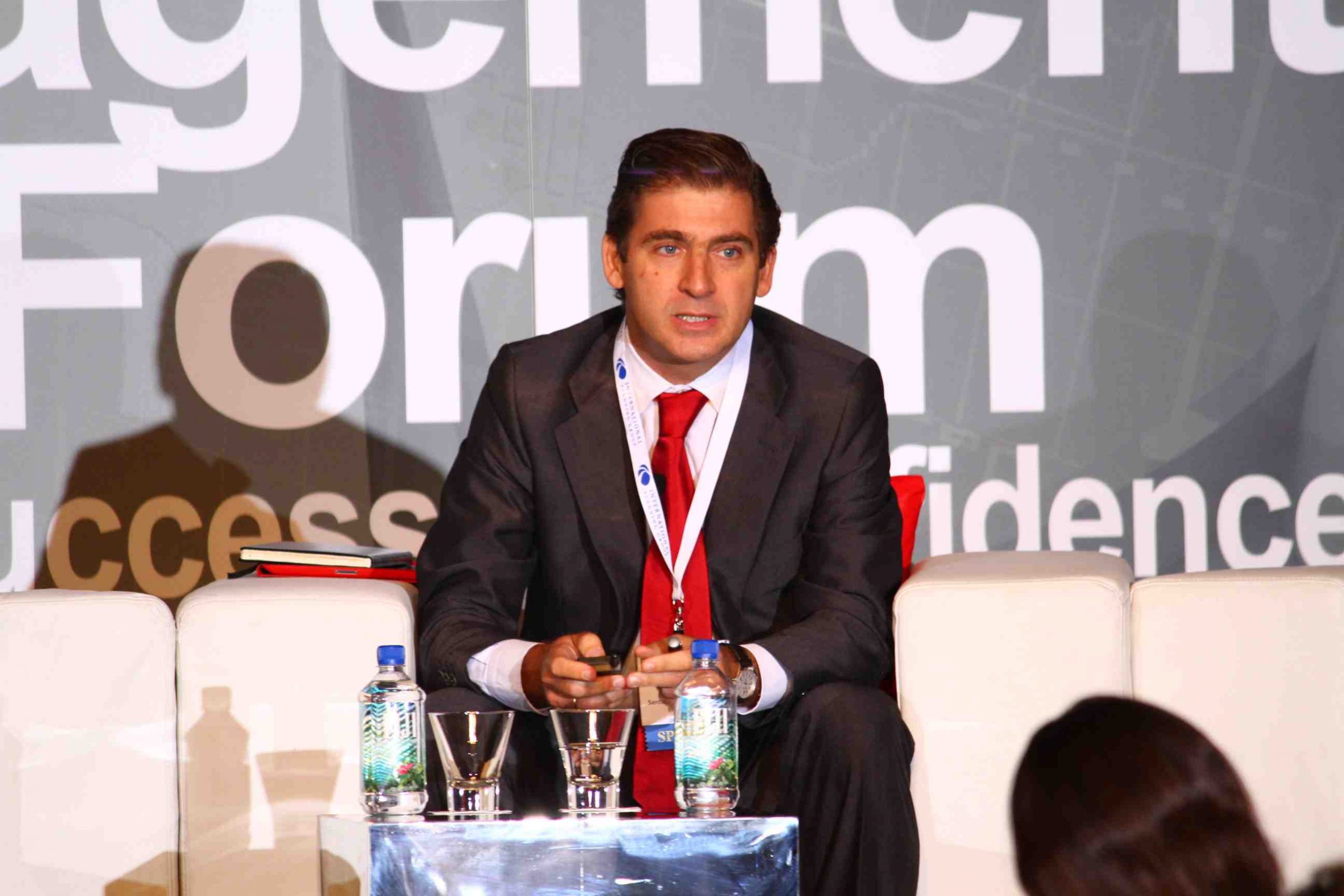Investors have to deal with both short-term volatility and downfalls risks. For Simon Fox, Senior Investment Specialist at Aberdeen Standard Investments, the adequate way to deal with this is to better diversify your portfolio. As he explains in this interview with Funds Society, at a difficult time for traditional fixed and variable income, he finds the most compelling opportunities through a range of diversifying assets, such as emerging market debt in local currency, investment in infrastructure and asset backed securities.
What does provide an ‘alternative’ approach to markets? Is it about looking for new sources of alpha or is it about protecting against risks?
Multi asset investing has evolved considerably since the Global Financial Crisis. Today’s investors are looking for a more explicit focus on their own objectives – such as a cash or RPI+ return; or maybe a consistent level of income. In the past a simple blend of stocks and bonds may have delivered decent returns, but not without significant volatility. Looking forward, historically low bond yields and challenging equity markets mean that even the returns achieved in the past look unlikely to be delivered in the future.
To address these challenges, we believe that investors should further diversify their portfolios. In particular, there are, today, a broader array of asset classes available and accessible to investors via UCITS regulated investment structures. Our Diversified Asset team seeks out fundamentally attractive long-term investments across listed equities, private equity, property, infrastructure, high yield bonds, loans, emerging market debt, asset backed securities, alternative risk premia, insurance linked securities, litigation finance, peer-to-peer lending, aircraft leasing, healthcare royalties and other asset classes.
Combining these asset classes in a diversified portfolio results in the attractive returns coming through in a much more consistent fashion than any one asset class in isolation. This approach is very transparent and does not rely on complex derivatives trades or our ability to trade in and out of markets over short-term horizons. This makes the approach easy to understand and robust to differing market conditions.
What are the main risks that you currently appreciate and how could alternative strategies help to mitigate them?
Investors have to contend with both the risk of short-term volatility and also the risk of failing to generate the growth (or income) that they need over the longer-term.
We believe that the right foundation for dealing with both of these is to better diversify the portfolio. As we have seen over the last few years, equity markets can, and do, suffer large drawdowns over short time periods – notably in the summer of 2015 and the start of 2016. By being more diversified, our multi-asset funds have experienced much smaller drawdowns through these periods; as such, they have also been able to compound positively as the markets have recovered.
And talking on risk, we could mention the low rates risk… do you see a bubble in fixed income? And could this bubble burst in some markets? How do you manage this risk in the funds? – Central Banks: what do you expect from Fed? Which will be the next steps of ECB? How do you manage all this issues in your portfolios?
When building our portfolios we make use of sophisticated optimization techniques and other quantitative modelling; but we also believe that it is important to consider the possible future risk scenarios that risk models won’t capture. Most recently we have assessed the possible impact of a North Korea/US conflict, a global pandemic and secular stagnation – as well as a rout in bond markets. While we regard it as a very low probability, there is nonetheless a risk that the US Fed is forced to raise interest rates rapidly over the next 12 months to deal with inflationary pressures and the prospect of a substantial fiscal stimulus. This scenario would see Treasury yields spike higher and equity markets fall. While our multi-asset funds would likely be down in this scenario, we would expect them to provide significant protection relative to a more traditional balanced portfolio.
Often this exercise throws up a call for some portfolio protection (put options, gold, etc) as minds become overly focused on the worst-case scenarios. However we remain of the view that the diversification across the funds should mitigate market falls to a large degree and that portfolio protection strategies are typically not cost effective. The recent reduction in equities is an example of our more preferred route to risk reduction especially when stretched equity valuations make the risk-reward trade-off less attractive. We currently have no exposure to traditional fixed income – either government bonds or investment grade credit.
Brexit: Which risks do you appreciate related to this process? Do you place the portfolios at a specific way in the run-up of Brexit?
At the start of 2016 – ahead of the UK referendum – we modelled a Brexit impact in our scenario analysis. In practice, the diversified and global nature of our portfolios, as well as share class specific currency hedging, meant that Brexit had little impact on our portfolios.
About Multi-Asset spectrum: in which segment do you see more opportunities of returns: in risk assets or in those assets with lesser risk?
Our asset allocation is derived from a longer-term outlook than many multi-asset funds, with a 5 year view of risk and return the main driver of our positioning. The chart below shows our current outlook for various asset classes. It highlights that traditional bonds – investment grade credit and government bonds – offer limited return potential (and, in some scenarios, limited diversification benefit). Equities still offer a premium over risk free assets, but this has narrowed over the last 6 months, notably in the US where valuations looked stretched on a range of measures. As such, we find the most compelling opportunities across a range of diversifying assets. This includes local currency emerging market debt (benefitting from good yields and strong fundamentals); infrastructure investments (which we can access through REIT-like investment trust structures); and asset backed securities.
Taking into account the environment of markets: do you consider necessary to reduce the expectation of returns or is still possible to obtain good returns with an alternative and multi-asset approach?
As can be seen from the chart above, our 5-year view is that traditional assets will under-perform relative to history. However, by being able to diversify the portfolio across a broader array of asset classes, we continue to believe that we can meet our long-term return targets for our funds while maintaining a volatility well below that of equity. Since inception our growth strategy has outperformed its Cash+4.5%pa return target, net of institutional fees, with a volatility of c.4.5%pa. Our ability to access a range of compelling opportunities stems from our ability to identify and access a broad range of asset classes in a liquid form. This is driven by the breadth and depth of resources we have across a range of investment specialisms.
Could you give us some examples of investments you currently hold in the portfolio? I mean some bets on relative value, for instance.
Within social infrastructure we have taken a couple of new positions recent months – adding Bilfinger Berger Global Infrastructure (BBGI) and International Public Partnerships limited (INPP). Both INPP and BBGI provide exposure to a large portfolio of Public Private Partnerships/Private Finance Initiative projects across the UK, continental Europe, Canada, Australia and the USA. These provide attractive, government-backed and largely inflation-linked long-term cash flows.
Within our special opportunities sleeve we have also made a new allocation BioPharma Credit. This holding provides exposure to a diversified portfolio of debt backed by the assets or royalties of biotechnology firms. Benefitting from the premium associated with specialist lending, Pharmakon Advisors are targeting an 8-9%pa return from a portfolio offering significantly different return drivers to other exposures in our Funds.




 By Alicia Jimenez
By Alicia Jimenez
 By Fórmate a Fondo
By Fórmate a Fondo
 By Alicia Miguel Serrano
By Alicia Miguel Serrano